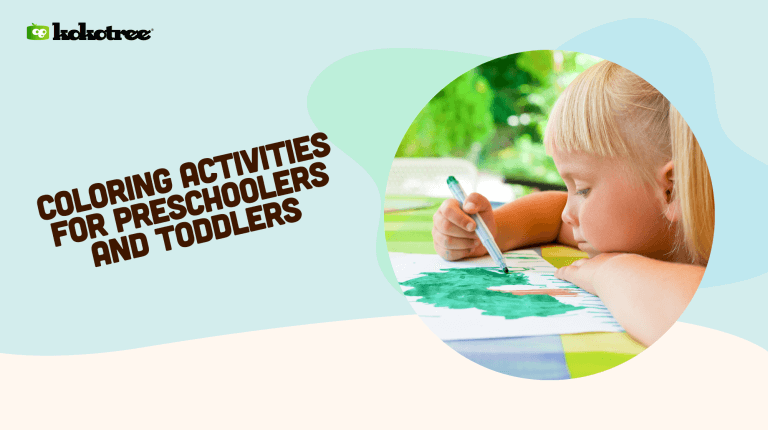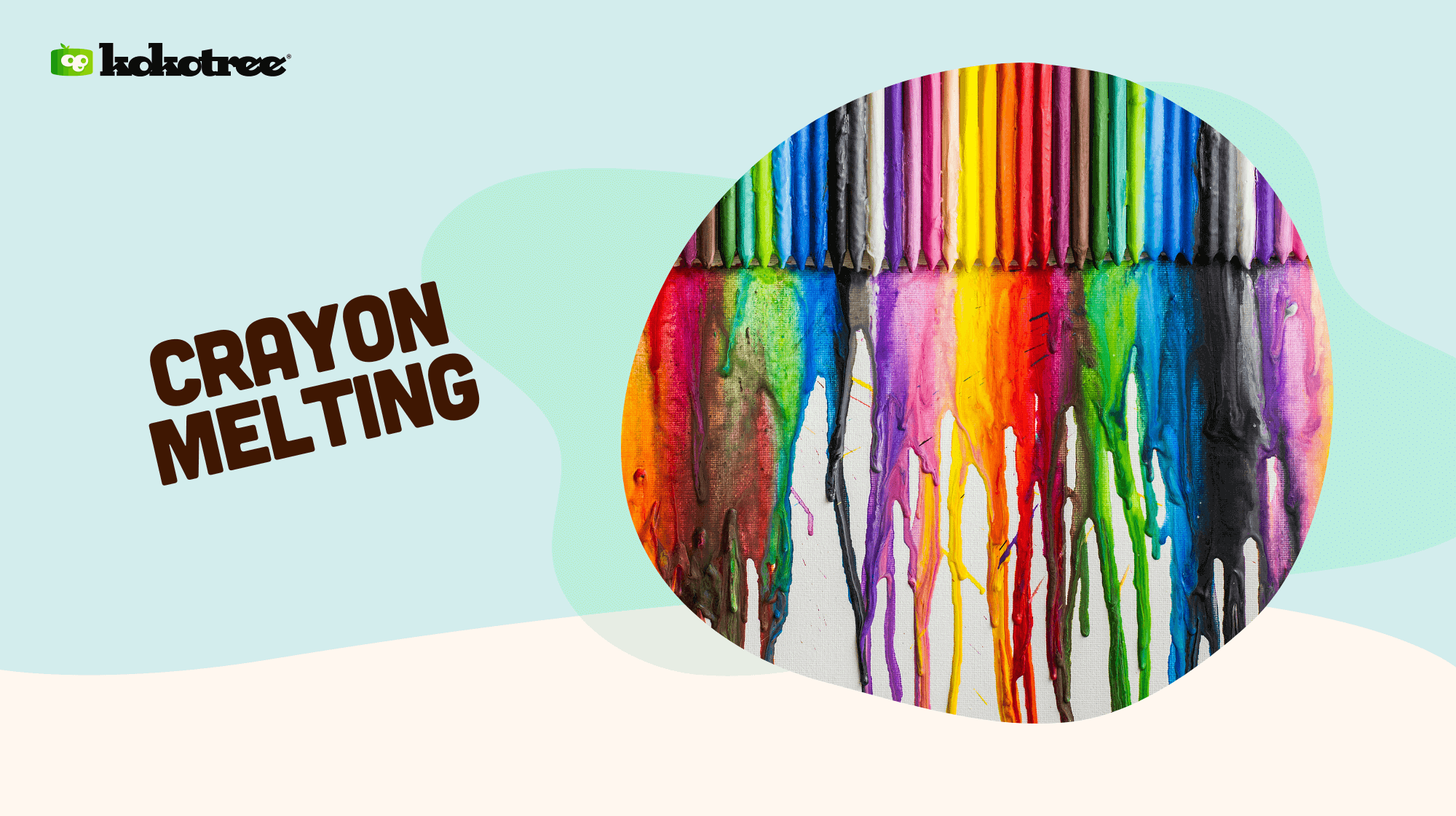

Coloring activities are fun and crucial for a toddler’s development. They help improve motor skills, stimulate creativity, and enhance color recognition.
Simple coloring activities for toddlers include coloring books with large images, freehand drawing with crayons, or even finger painting.
Remember to always use non-toxic, washable coloring materials for toddlers to ensure their safety.
Engaging toddler coloring activities can range from traditional coloring books to more innovative and interactive methods.
For instance, you can create a coloring treasure hunt where your toddler has to find and color certain objects in a large picture.
Alternatively, you can use coloring as a way to learn about different topics, such as animals, shapes, or numbers. Always ensure to praise your toddler’s effort to boost their confidence and encourage creativity.
Fun color activities for preschoolers can go beyond the coloring book. Consider activities that involve sorting and matching colors, like a color scavenger hunt where children find items around the house that match certain colors.
Another fun activity is color mixing, where children can learn how to create new colors by combining primary colors. These activities teach color recognition and enhance problem-solving skills and creativity.
When it comes to coloring materials for toddlers, safety and ease of use are paramount. Crayons are a great choice as they are easy to grip and come in a variety of colors.
Washable markers are also a good option as they allow for easy cleanup. Finger paints can provide a fun, tactile experience for toddlers, helping them to engage more fully with the coloring activity.
Always ensure that any coloring materials you choose are non-toxic and suitable for your child’s age.
Looking for a quick and convenient way to engage your child in coloring activities? Download free Kokotree coloring pages and allow them to enjoy various fun and creative themes. These printables are perfect for rainy days or when you need a moment of peace. Here’s how to get started:
Supplies needed:
Display their finished artwork proudly, and consider storing their creations in a folder or scrapbook to cherish their artistic journey.
Why settle for store-bought coloring books when you can inspire your child’s creativity with make-your-own coloring pages? This activity not only encourages imagination, but is also environmentally friendly, giving new life to used paper and cardboard. Before starting, ensure you’ve got the necessary bits and bobs, such as:
Get ready to adorn your fridge with these colorful creations, and don’t forget to recycle the coloring pages once they’ve had their moment in the spotlight!
Introduce your child to the magical world of color mixing! This exciting activity teaches kids about primary and secondary colors and promotes creativity and experimentation. All you need are a few basic supplies:
Put their colorful masterpieces on display, and remember to snap a photo for the memory books!

Transform old, broken crayons into dazzling artwork with this captivating activity! It’s a fantastic way to teach your child about the science of melting and cooling and the importance of recycling. Ensure you’ve got the following supplies before embarking on this creative adventure:
Proudly hang up your child’s beautiful crayon-melting masterpieces as a testament to their artistic prowess!

Bring the outdoors in with nature-inspired finger painting! This engaging activity combines art, sensory play, and nature exploration, creating a memorable experience for both you and your little one. Gather these supplies and prepare to make a colorful mess:
Once the artwork is complete and dry, display it proudly as a reminder of your child’s connection to the natural world.
Here’s an ingenious, mess-free alternative to traditional painting! Sensory bag painting not only satisfies the sensory needs of children but also helps develop fine motor skills and hand-eye coordination. Grab these supplies and get ready for some colorful parenting tips that are easy on clean-up:
This sensory bag painting activity is perfect for those days when you’re short on time or energy but still want to engage your child in a fun and creative activity.
Got little ones who love to taste-test everything in sight? Whip up a batch of homemade, edible finger paints for worry-free, colorful playtime! Here’s what you’ll need:
Enjoy the freedom of mess and worry-free playtime with these edible finger paints, knowing your little one can safely create their colorful artwork!
Introduce your child to collage art – a delightful way to spark their creativity while honing scissor skills and hand-eye coordination. With this imaginative, low-pressure activity, your child can build an eye-catching masterpiece from the following supplies:
Display their work of art around the home, showcasing their fascination with shapes, colors, and patterns!
Stimulate your child’s senses with the colorful and tactile experience of sensory rice drawing. Not only is it a creative and fun activity, but it’s also a great way to develop fine motor skills and concentration. Here’s what you’ll need:
Once the glue has dried, hang their sensory rice drawing in a special place, celebrating your child’s creativity and sensory exploration!
Curious about making the most out of your child’s coloring experience? Find answers to some of the most frequently asked questions regarding coloring activities for preschoolers and toddlers. Let this FAQ guide help you create joyful, colorful memories with your little artist.
Coloring activities engage children in creative expression and foster the development of essential skills, such as fine motor skills, hand-eye coordination, color recognition, and concentration. Furthermore, coloring allows children to explore their imagination and develop a sense of accomplishment.
Both coloring pages and free drawing offer unique benefits. Coloring pages help children practice staying within lines and focusing on details, while free drawing encourages creativity and self-expression. Providing a mix of both activities allows your child to develop a well-rounded set of artistic skills.
Materials such as washable and non-toxic crayons, markers, and finger paints are suitable for toddlers. Many companies offer products specifically designed for young children, ensuring that the materials are safe and easy to clean.
Offer varied materials, colors, and textures; encourage experimentation, and provide positive feedback. Be sure to ask open-ended questions about their artwork to spark conversation and let your child explain their creative choices.
Sensory bag painting, water drawing mats, and washable markers are excellent mess-free options. These activities provide enjoyable coloring experiences without the worry of spills, stains, or hard-to-clean accidents.
There’s no definitive rule, but including coloring activities a few times a week provides a balanced, creative outlet for your child. Remember to keep the atmosphere fun and stress-free, ensuring that your child enjoys the process.
Digital coloring apps are a convenient, mess-free alternative to traditional coloring. However, physical coloring activities provide tactile experiences and sensory development opportunities that digital apps cannot. A mix of both traditional and digital coloring can offer a diverse creative experience.
Each child is unique and may have different interests. Observe your child’s preferences and consider experimenting with various materials, techniques, or themes to spark their enthusiasm for coloring. Encourage them to explore their artistic side but be patient if they show more interest in other forms of play or expression.




